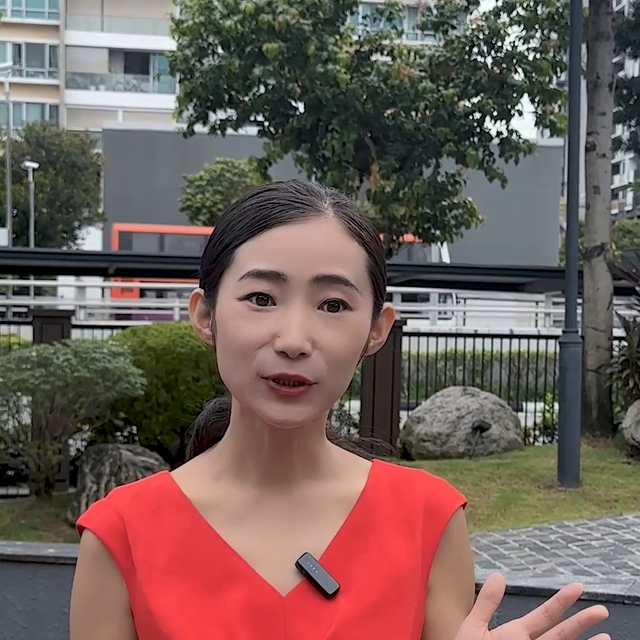新加坡金管局局长拉维:金融推动零碳革命的三个策略
编者按:海南自由贸易港建设对标世界最高水平的对外开放,香港、新加坡、迪拜等自贸港都是海南学习、参考、研究的对象。海南自贸港的金融也需要了解国际其他地区自贸港在做什么。为此,海南自由贸易港金融发展中心特开设自贸港金融·他山之石栏目,不定期翻译其他国际自贸港金融的政策、研究等。
本期我们特翻译新加坡金融监管局局长拉维-梅农(Ravi Menon)在2022年11月9日新加坡金融博览会上的演讲。以下是演讲内容:

早上好,女士们、先生们。欢迎来到由新加坡金管局主办的新加坡金融博览会。
气候变化不再是一个预言,它正在成为现实。最近几年,极端气候事件的频率和强度远超过早期气候模型的预测。我们正在开展一场生存赛跑,也就是2050年温室气体排放达到零碳。只有即时行动,迅速行动,一致行动,我们才能赢得这场赛跑。
我们必须即时行动,才能减少碳排放。世界正在逐渐远离零碳排放的发展轨迹。全球温室气体的碳排放仍在呈上升趋势,而不是开始下降。我们若不是即刻行动来启动碳减排,便会陷入打破最后临界点的风险,带来一场灾难性、无法挽回的气候变化,并伴随着生命财产无法估量的风险损失。
我们需要迅速行动,以金融手段支持零碳革命。碳减排是一项昂贵的事务。我们也必须平衡碳减排和经济发展。这个世界需要以金融手段维持可持续发展和新技术进步,以保证在2050年达到零碳——根据一些机构的预测,每年约投入9.2万亿美元,这比现在的年平均投资额提高了3.5万亿美元。
我们还需要一致行动。气候的挑战已经不是单一政府或者任何国家能够独自解决的小问题。我们需要全球共同努力,各国家的社区一致协同。在公共部门、私人部门和个体单位建立高效的合作伙伴关系,将成为推动有效合理的金融变革必要而关键的一步。
作为亚洲领先的国际金融中心,新加坡将成为动员资本特别是支持亚洲零碳革命的重要成员。在本届新加坡博览会上,我们为实现上述目标设定了三个关键策略:
(1)混合融资以动员推动变革的私人资本;
(2)碳金融市场以利于减少碳排放和碳包容性;
(3)优质数据以支持具有公信力的信息披露和追踪进度。
混合融资
第一点策略——通过混合融资来实现公共和私人资本的协同增效,支持一些微利的生产项目。在新兴市场,很多环保和转型的生产项目所产生的风险与它们的超额收益并不相称。我们需要催化资本去推动生产项目的盈利和大批量进入私人资本。混合融资也能够合并金融与市政建设,技术转移,以及机构支持,以减少风险和增加利润。
混合融资并不是新兴事物,但是规模使用需要探索新的路径。大约一个月之前,新加坡金管局举办了首次针对零碳革命融资的大型会议。会议集聚了超过500名来自世界各地的政府领导和专业人员——包括企业、协会、政府以及多国发展银行——探讨如何实现混合融资规模使用的具体细节。
他们的关键步骤是那些?
首先,更强的能力和专业经验来筹备生产项目。这在生产项目的早期阶段是关键的,特别是在发展中国家。零碳革命的生产项目需要很好的前期策划,建立清晰的发展目标和透明的衡量指标来吸引私人资本。
其次,更好的风险缓释和转移机制。我们需要从公共部门、多国发展银行、慈善资金来源等获得催化和优惠的资金资助,以改善生产项目的盈利能力和大批量进入私人融资部门的附加乘数。这意味着重新审视金融模型和多国发展银行的激励结构。
再次,更为合作增效的金融生态系统。我们需要将贷款从银行表内移至表外,将其纳入机构投资者可以参与的结构化表格中,实现资本的回收利用。
新加坡正在采取积极的举措来实现零碳革命的规模化和融资支持的多元性。
(1)亚洲基础设施办公室,其发起人为新加坡金管局和新加坡企业家协会,为生产检查提供专家建议,分享生产发展的最佳实践,以及便利所在区域的基础设施金融交易。
(2)Clifford Capital,其信贷业务担保人为新加坡政府,为基础设施的生产项目大批量的股权参与提供债务融资。
(3)Pentagreen Capital,作为汇丰银行和淡马锡的合伙人,即将策划一个大规模的混合融资方案,以进入东南亚那些微利的生产项目。
(4)Convergence,一个混合融资的全球网络,发起了一项价值5千万美元的资助计划,该计划由新加坡金管局支持,针对在亚洲资本不足的目标部门,实现在混合融资方面的可行性研究和概念性论证的资助。
新加坡也是促进零碳革命和混合融资的全球重要协同者。
(1)央行与监管机构绿色金融网络(NGFS)已经建立了一个混合融资倡议,从过去的案例学习中识别最佳实践和课程,提供实现大规模混合融资支持的方式的实务指导。新加坡金管局和荷兰中央银行将主导这项倡议。在今天下午,本次博览会关于NGFS的圆桌讨论开始之前,我将以主题发言的形式分享更多的细节。
(2)格拉斯哥净零排放金融联盟将发起一项倡议,用于提升对于金融机构的指导能力,聚焦于如何更好的管理亚太地区被淘汰的煤电产能。新加坡金管局和亚洲发展银行将参与这项倡议。
通过碳金融市场融资
第二点策略——通过碳金融市场建立融资渠道,减少碳排放、移除碳排放的生产项目。很多实体企业发现,很难彻底清除它们的碳排放,甚至只是按照他们的意愿快速减少碳排放。高质量的碳信贷额度源于减少碳排放、清除碳排放的生产项目,也允许实体企业抵消他们所不能彻底清除的碳排放,并为那些他们除此渠道、无法启动的生产项目提供融资支持。一个运行良好的碳交易生态系统,与亚洲的零碳革命举措是特别相关的。
自愿申领的碳信贷额度市场是巨大的。不幸的是,在碳记账和碳识别的实践中,不同国家地区的规则差异已经引发了对于碳信贷额度一定程度的怀疑。为了建立一个高效运行而具有公信力的碳金融市场,我们需要推动更优质和可证实的数据对销,碳记账实务的协同,以及在自愿申领和服从分配的碳金融市场之间的互通操作。
新加坡正在定位成为区域性的碳金融服务和交易中心。
(1)我们拥有合适的基础设施,良好的政府治理,以及优质的信托环境——对于市场来说是关键因素;
(2)我们位于东南亚的核心地带,对于主导建立碳捕获基于自然的解决方案深具潜力、条件优渥。东南亚掌握了超过三分之一的世界红树林,以及拥有1.2亿公顷适合重新造林的土地。
(3)我们正在提升可持续生产和发展的能力,从而加强碳信贷额度的价值链:识别和激活生产设计,主导和认证生产结果。
优质数据支持金融变革
第三点策略——以优质数据去支持金融变革。具有公信力和可供比较的数据对于气候议程是基础性的要素。
(1)碳股票方面的数据,生产项目的碳排放组合,以及历史交易数据能够为市场提供一个气候相关风险的合适的观察视角。
(2)优质数据有助于产出强劲的可持续发展报告,减轻信息粉饰,以及协助投资者做出有效的ESG信息相关决策。优质数据有助于解决方案的形成,诸如混合融资支持,和打造一个有效可信的碳市场支柱。
(3)但是在数据需求和可得性之间仍然存在较大的鸿沟。ESG数据获取的过程常常是手工的,冗长而昂贵。鉴别数据的技术手段还处于萌芽阶段。
为了建立一个具有公信力的ESG数据生态系统,新加坡金管局已经与金融行业合作推出了一项名为Project Greenprint计划。该计划通过四种数字化公用程序,寻求使搜集、获取和使用气候和可持续发展数据更为节约的途径:
(1)一项ESG登记注册的资格认证;
(2)一项便利生成报告的ESG信息披露平台;
(3)一个数据交易场所,以连接数据使用者和ESG方案提供者,一个从多元数据来源整合ESG数据的协调器。
在全球范围内,格拉斯哥净零金融联盟已经形成了零碳数据公共程序,用来发布一些事项,比如数据鸿沟、数据存取可得性,以及数据不一致性问题。它弥补了现存气候数据主动权的不足,促进了气候相关金融风险的有效管理,便利了强劲的可持续发展报告的生成,加速了可信变革计划的形成。
我已经对于新加坡在金融变革方面的三个关键领域的举措进行了全面回顾——混合融资、碳金融市场,以及优质数据。今天下午,我将分享一些NGFS在混合金融、数据和能力建设方面所做的一些饶有意趣而富有影响力的工作成果。
在我们所做的努力中,最值得强调的是协作和集体行动。我们拥有共同的使命:到2050年将全球温室气体的排放减至零碳。但是时不待我。我们必须即刻行动,迅速行动,一致行动。对我们而言,此刻就是最好的时机,去找到共同的目标,齐心协力,确保我们所居住的地球实现更可持续的发展,以及地球上的各国人民过上更好的生活。
感谢大家的聆听。
原文:
Net zero - act now, act fast, act together
Ravi Menon,Managing Director of the Monetary Authority of Singapore
Speech at the COP27 Singapore Pavilion Finance Day, Sharm El-Sheikh, 9 November 2022
01
Introduction
Good morning, ladies and gentlemen. Welcome to the Singapore Pavilion's Finance Day, hosted by the Monetary Authority of Singapore (MAS).
Climate change is no longer a prediction, it is becoming a reality. The frequency and intensity of today's extreme weather events have exceeded early climate models. We are in a race for our lives, to reach net-zero greenhouse gas emissions by 2050. Unless we act now, act fast, and act together, we will lose that race.
We need to act now to start reducing emissions. The world is currently far from a net-zero emissions trajectory. Global greenhouse gas emissions are still rising, not falling. If we do not act now to start decarbonising, we risk breaching tipping points that will lead to catastrophic and irreversible climate change, with unimaginable risks to lives and livelihoods.
We need to act fast to finance the transition to net-zero. Decarbonisation is a costly affair. We must also balance decarbonisation and development. The world requires significant financing for sustainable development and new technologies to reach net zero by 2050 - by some estimates, US$9.2 trillion annually. This is US$3.5 trillion more than the annual investment today.
And we need to act together. The climate challenge is too big for governments or any one country to solve. We need a global effort and a whole-of-society approach within each country. Effective partnerships across the public, private, and people sectors will be key to mobilise the financing necessary for an effective and just transition.
As a leading global financial centre in Asia, Singapore can play an important role in mobilising this capital, especially to support Asia's transition to net-zero. At the Singapore Pavilion, we have set out how we will do this through three key strategies:
(1) blended finance to mobilise private capital for the transition
(2) carbon markets to facilitate emissions abatement and inclusivity
(3) good-quality data to support credible disclosure and track progress
02
First strategy
First strategy - blended finance to synergise public and private capital for projects that are marginally bankable. Many green and transition projects in emerging markets pose risks that are not commensurate with their expected returns. We need catalytic capital to improve project bankability and crowd in private sector capital. Blended finance is also about combining financing with capacity building, technology transfer, and institutional support, to reduce risk and enhance bankability.
Blended finance is not new but scaling it requires a fresh approach. About a month ago, the Monetary Authority of Singapore (MAS) held the inaugural Transition Finance towards Net Zero Conference Conference. The conference saw more than 500 leaders and experts from across the world – from industry, academia, governments, and multilateral development banks - discuss the nuts-and-bolts of what it takes for blended finance to scale.
What were their key take-aways?
One, greater capacity and expertise to prepare projects. This is critical at the early stages of project development, especially in developing economies. Transition projects need to be well designed with clear targets and transparent metrics to draw private capital.
Two, better risk mitigation and risk transfer mechanisms. We need catalytic and concessional funding from the public sector, multilateral development banks, and philanthropic sources, to improve project bankability and crowd in additional multiples of private sector funding. This will mean re-looking the financing models and incentive structures of multilateral development banks.
Three, a more synergistic financial ecosystem. We need to recycle capital by taking loans off bank balance sheets and structuring them in a form that institutional investors can participate in.
Singapore is taking active steps to scale transition and blended finance.
(1) Infrastructure Asia, launched by MAS and Enterprise Singapore, provides expertise in project scoping, shares best practices in project development, and facilitates infrastructure financing deals in the region.
(2) Clifford Capital, whose borrowings are guaranteed by the Singapore Government, provides debt financing to crowd in equity participation for infrastructure projects.
(3) Pentagreen Capital, a partnership between HSBC and Temasek Holdings, will deploy blended finance at scale to unlock marginally bankable projects in Southeast Asia.
(4) Convergence, a global network for blended finance, has launched a S$5 million grant scheme supported by MAS, which will fund feasibility studies and proof of concept work on innovative blended finance solutions in target sectors that are under-capitalised in Asia.
Singapore is also partnering global efforts to promote transition and blended finance.
(1) The Network of Central Banks and Supervisors for Greening the Financial System (NGFS) has established a Blended Finance Initiative, that will identify best practices and lessons from past case studies and provide practical guidance on modalities to scale up blended finance. MAS and the De Nederlandsche Bank (DNB) will lead this Initiative.I will share more details in my remarks this afternoon before the NGFS discussion panels at this Pavilion.
(2) The Glasgow Financial Alliance for Net Zero Asia-Pacific Network will launch an initiative to develop guidance for financial institutions on how they can facilitate the managed phase-out of coal power generation in the Asia Pacific. MAS and the Asian Development Bank will participate in this initiative.
03
Second strategy
Second strategy - carbon markets to channel financing towards carbon abatement and removal projects. Many entities find it difficult to eliminate their emissions or to even reduce them as quickly as they would like. High quality carbon credits generated by emission reduction and removal projects allow such entities to offset the emissions they cannot get rid of while providing financing for these projects that would otherwise not get off the ground. A well-functioning carbon trading ecosystem is particularly relevant to Asia's transition effort.
The market for voluntary carbon credits is huge. Unfortunately, differences in carbon accounting and credit recognition practices across jurisdictions have led to carbon credits being treated with a degree of skepticism. To build an efficient and trusted carbon market, we will need better and verifiable abatement data, harmonisation in carbon accounting practices, and interoperability between the voluntary and compliance carbon markets.
Singapore is well-positioned to be a carbon services and trading hub.
(1) We have sound infrastructure, good governance, and a premium on trust – critical ingredients for a marketplace.
(2) We are located at the heart of Southeast Asia which is fertile ground to harness the potential of nature-based solutions for carbon sequestration.Southeast Asia holds more than one-third of the world's mangroves and has about 120 million hectares of land suitable for re-forestation.
(3) We are strengthening the carbon credit value-chain by growing project development capabilities: certify and validate project design, and monitor and verify project outcomes.
04
Third strategy
Third strategy – good-quality data to support transition finance. Credible and comparable data is foundational for the climate agenda.
(1) Data on carbon stocks, emissions profiles of projects, and historical deal data can provide the market with a proper view of climate-related risks.
(2) Good-quality data is key to robust sustainability reporting, combating greenwashing, and enabling investors to make effective ESG-informed decisions. Good-quality data enables solutions such as blended finance and forms the backbone of an efficient and trusted carbon market.
(3) But there is a significant gap between data needs and data availability. The ESG data acquisition process is often manual, tedious and costly. Data verification is at a nascent stage.
To build a credible ESG data ecosystem, MAS has launched a collaborative effort with the financial industry called Project Greenprint. Project Greenprint seeks to streamline the collection, access, and use of climate and sustainability data through four digital utilities:
(1) an ESG registry of certifications
(2) an ESG disclosure platform to facilitate reporting
(3) a digital marketplace to connect data users with ESG solution providers a data orchestrator to aggregate ESG data from multiple data sources
Globally, GFANZ has formed the Net Zero Data Public Utility to address issues such as data gaps, data accessibility, and data inconsistencies. It will complement existing climate data initiatives, promote the effective management of climate-related financial risks, facilitate robust sustainability reporting, and accelerate the formulation of credible transition plans.
I have provided a quick overview of Singapore's efforts in three key areas of transition financing - blended finance, carbon markets, and good-quality data. This afternoon, I will share some of the interesting and impactful work being done by the NGFS in the areas of blended finance, data, and capacity building.
In all our efforts, I cannot emphasise enough the importance of collaboration and collective action. We have a common mission: to reduce global greenhouse gas emissions to net zero by 2050. But time is running out. We must act now, act fast, and act together. There has never been a greater opportunity for us to find common purpose, build solidarity, and ensure the sustainability of our planet and better lives for communities everywhere.
Thank you.






















评论